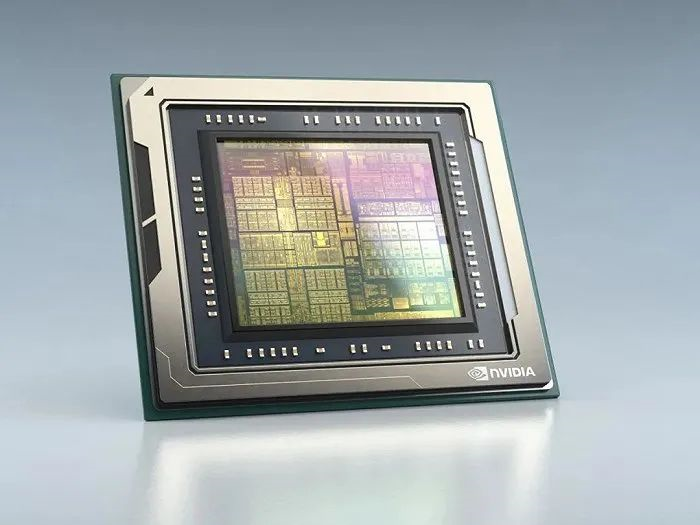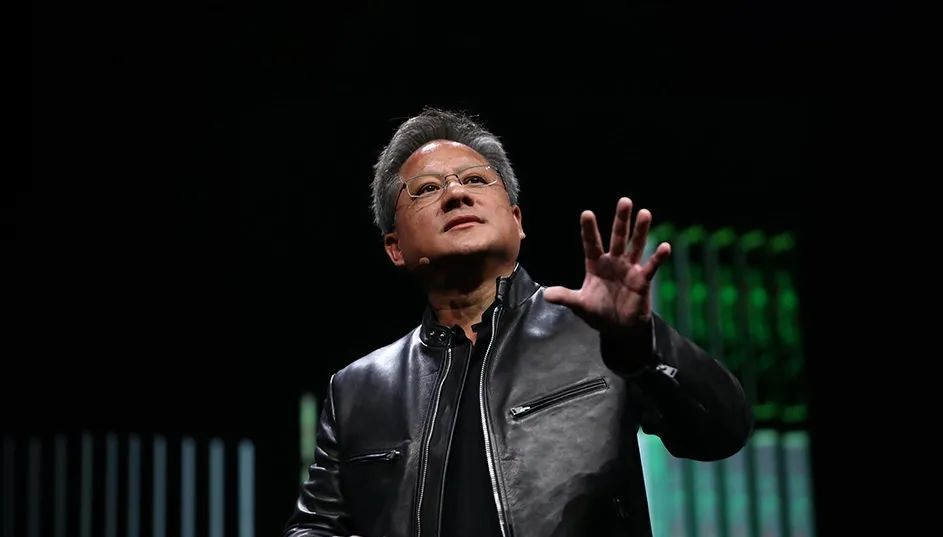Author: Michelin
They say 2022 is the year of 1000TOPS computing power in the automotive industry, and car companies have finally come up with dual-chip and quadruple-chip architectures to achieve 1000TOPS computing power. Nvidia came out with a “nuclear bomb” and broke through its own ceiling.
At this week’s GTC2022 conference, Nvidia announced the release of a new generation of car chips called “Thor” in 2024. This car chip, which shares its name with Thor, has a single-core computing power of 2000TOPS and a floating-point computing power of 2000 TFLOPS. It is 8 times the capacity of the Orin (254TOPS) self-driving chip currently used in production cars and twice the capacity of the Atlan chip (1000TOPS) released just last year.
The Atlan, which was expected to go into production in 2024, has been directly surpassed by its successor, Thor.
It seems that Nvidia is ready to go all out in the field of computing power.

“Thor” with multi-chip fusion is stronger than eight chips
Exactly how many chips a smart car needs is a number that no one can accurately give.
However, the trend of smart cars evolving towards a centralized electronic system cannot be denied. This means that the future demand for car chips remains constant while using fewer chips to achieve more functions.

At the GTC2022 conference, Nvidia CEO Jensen Huang said, “One chip to rule them all!” The reason he can say this is due to the new generation of car chips, Thor.
From an overall architecture perspective, Thor’s performance benefits from the CPU (Grace), GPU (Ada Lovelace), and engine (Hopper) that handles transfer models.
In summary: 2000TOPS high computing power, high integration supporting cockpit fusion, and triple support for vehicle-side machine learning.
 Grace provides excellent single-threaded performance, enabling a single chip to achieve 2000 TOPS and 2000 TFLOPS of floating-point computational power. The performance improvement allows more computational redundancy for the in-vehicle computing platform.
Grace provides excellent single-threaded performance, enabling a single chip to achieve 2000 TOPS and 2000 TFLOPS of floating-point computational power. The performance improvement allows more computational redundancy for the in-vehicle computing platform.
Compared to the mainstream autonomous driving chip Orin currently on production vehicles, which has a single-chip computational power of 254 TOPS, many automakers use double Orin or quad Orin configurations to meet the current and future needs of autonomous driving systems for computing power, such as the Adam platform composed of four Orin chips on the NIO ET7.
Although there is sufficient computational power under a multi-chip platform, the efficiency of cross-chip invocation in actual use is not high because the internal transfer speed of the chip is much higher than the communication speed between chips. This also means that when a single chip can provide sufficient computational power, it is a better solution.
The application of the Transformer engine in Thor can process video data into a single perception frame on the in-vehicle computer, allowing the computing platform to process more data over time and perform machine learning on the vehicle, reducing the vehicle system’s reliance on the cloud.
The 2000 TOPS of computational power is more than enough to meet the needs of current autonomous driving systems. Therefore, Thor can use all of its computational power for autonomous driving, or allocate some to intelligent cockpits and the rest for autonomous driving.
In other words, Thor can be both a standalone autonomous driving chip and a cabin integration chip, and even integrate more functions at the same time.
To meet this need, the invention of multiple-instance GPUs in Ada Lovelace helps centralize the computing resources in the vehicle. Currently, many functions in the vehicle, such as parking, active safety, driver monitoring, and infotainment, are controlled by different computing devices. Ada Lovelace can centralize different functions on the same SOC chip, reducing costs, power consumption, vehicle weight, and providing linkage between functionalities for a performance leap.
To ensure the safety of centralized control with multiple functions, Thor isolates multiple computing domains and can simultaneously run Linux, QNX, and Android. With a single-chassis architecture, it can run the complete set of autonomous driving + digital dashboard/infotainment + in-vehicle entertainment systems for a supercomputer in compliance with vehicle regulations.
Should intelligent cockpits be integrated with autonomous driving or remain independent? This dilemma is largely constrained by the current limitations in vehicle chip computing power.
The emergence of high computational power chips such as Thor has further advanced the integration and fusion of vehicle electrical and electronic architecture and cockpit design goals. By integrating more functions with fewer chips and components, not only can functional linkage be improved, but the complexity of the vehicle structure, the unnecessary ECU modules and wire harnesses, and even a series of development and manufacturing processes can also be reduced.
This time, Thor’s release also announced that JIKE will take the lead in its release.

NVIDIA DRIVE Update, Giving a Boost to Autonomous Driving Simulation
Whether it is a car company or an autonomous driving technology company, computational power is an essential factor to consider when choosing autonomous driving chips. However, the actual performance, cost-effectiveness, and the maturity of related software ecosystems and toolchains are also crucial to the final decision.
For example, over the past two years, many carmakers have abandoned Mobileye and turned to Nvidia’s Orin chips. Nvidia’s high openness and mature toolchains deserve the credit.
This time, Nvidia has also made updates to the NVIDIA DRIVE platform specifically developed for autonomous driving vehicles.

As a full-stack end-to-end platform, NVIDIA DRIVE includes full-stack driving and in-car AI applications, AI computers, and Hyperion autonomous driving vehicle reference architecture. Nvidia employees have developed an AI workflow that can construct a 3D scene based on recorded sensor data. After importing the 3D scene into DRIVE Sim, it can be enhanced through human-created or AI-generated content to reconstruct a complete 3D digital twin in just a few minutes.
Through the AI technology of this platform, the real-time acquisition and reconstruction of some small probability objects and scenes during vehicle travel can be carried out and placed in the simulation system for closed-loop testing, thereby avoiding more risky scenarios. In the future, DRIVE Sim will also support in-car environment simulation.At the press conference, NVIDIA demonstrated a video of autonomous driving, showing that the vehicle can achieve full autonomous driving from start to destination without human intervention. During the driving process, the system can implement functions such as pedestrian recognition, machine learning multi-camera fusion, estimation of other vehicle behaviors, real-time hardware in the loop, extraction of map features, automatic 3D scene generation, 3D scene enhancement, real-time radar simulation, and real-time multi-sensor simulation.

Conclusion
In this year’s GTC2022 speech, the new generation of in-vehicle chip Thor and NVIDIA DRIVE were a significant focus. In fact, from NVIDIA’s current financial situation, we can see some clues.
Last month, NVIDIA released the 2022Q2 financial report. Affected by the gaming business, NVIDIA’s overall revenue and net profit showed a decline, but the most significant surprise came from the 45% growth in the automotive business, which is closely related to this year’s Orin chip mass production and widespread use in vehicles.
In the new car models unveiled this year, whether it’s “We Xiaoli,” “Zhi Ji,” or “WM,” all of them are equipped with Orin chips, and BYD will begin mass production of cars equipped with the DRIVE Orin computing platform next year. The high demand for Orin has raised everyone’s expectations for Thor’s production and autonomous driving and intelligent vehicle performance.
But such an aggressive “nuclear bomb” may not be enough for NVIDIA to “lie down and win.”
The launch of Thor has further realized the centralized integrated architecture of intelligent driving, which undoubtedly has also affected Qualcomm’s hot cake in the intelligent cockpit field.
Qualcomm is not sitting idly by. Since the release of the first autonomous driving chip Snapdragon Ride in early 2020, Qualcomm has not stopped stepping into the autonomous driving chip race. Just two days after NVIDIA released Thor, Qualcomm launched the “industry’s first integrated automotive supercomputing SoC” Snapdragon Ride Flex, with a single computing power of over 600TOPS and a comprehensive AI computing power of up to 2000TOPS. The competitive situation between NVIDIA and Qualcomm has now begun.


Almost simultaneously, Cruise, a self-driving car company under General Motors, confirmed that it would abandon Nvidia’s GPU and develop its own central processing chip, and the reason for this decision is “cost”.
Similarly, Tesla, which has always been self-reliant, has already equipped its self-developed chips in mass-produced cars, and announced that it would supply its self-developed chips to multiple host factories including Geely, as well as domestic chip technology companies such as Horizon Robotics and Black Sesame. With the launch of Thor, their next move will also focus on the technical route of large computing central domain controller chips.
In this car chip computing power battle, Nvidia took the lead with its “ace”, but the chip competition has only just begun.
This article is a translation by ChatGPT of a Chinese report from 42HOW. If you have any questions about it, please email bd@42how.com.
